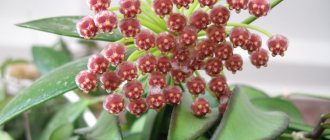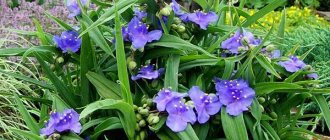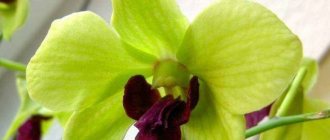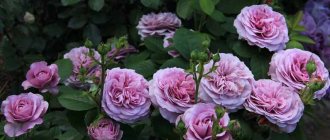Residents of Asian countries were the first to grow chamomile chrysanthemums. These flowers were used not only to decorate the home and garden: the ancient Chinese even ate them. Chrysanthemums in the form of daisies were brought to the territory of the Old World only at the end of the 18th century. Europeans began to use them as decorative decorations for parks and gardens, and also grew them indoors.
What are chamomile chrysanthemums?
Chamomile chrysanthemums are perennial shrub plants with umbrella inflorescences. They belong to the Aster family. They are most common in Asia, but they are also frequent guests in garden plots in our country. Translated from Greek, the word “chrysanthemum” means sun flower.
Snow-white daisy-shaped chrysanthemums
The bush daisy chrysanthemum is easy to recognize among all other varieties. Their flower heads resemble the well-known daisies. Hence the name “chamomile”. But chrysanthemums are distinguished by their larger size and spectacular appearance of the inflorescences. Their color can be not only white. There are many varieties of daisy chrysanthemums in pink, purple, yellow, cream, and red shades. White varieties of chrysanthemums are often confused with daisies, believing that they are the same thing, but the difference between them is obvious.
- Similarities. They belong to the Angiosperms department, the Dicotyledonous class, the Asteraceae family, therefore, they have a fundamentally similar structure of the root and shoot systems and the principle of flower structure. In both plants the inflorescence is a basket, the fruit is an achene. In addition, both daisies and chrysanthemums grow in the temperate zone and are perennial ornamental plants.
- Differences. Chamomile inflorescences are smaller than those of most chrysanthemums and have fewer single-petal flowers. The colors of chrysanthemums are extremely diverse; they can be either herbaceous or shrubby. And daisies are only white and herbaceous. In addition, these plants have different pollination methods and different flowering periods.
Breeders have developed many modern varieties of this ornamental plant. Flower growers have the opportunity to choose a large number of options for decorating a garden or balcony. Before purchasing seedlings of a flower similar to chamomile, you should familiarize yourself with its varieties. Here are the most popular varieties of chamomile chrysanthemums:
- Chrysanthemum Inga (Inga Chrysanthemum). Bush, belongs to the Korean varieties. The flowers are anemone-shaped, yellow, with tubular petals in the middle and long feathery petals at the edges. Bush 70 cm high.
- Chrysanthemum Camille (Camille Chrysanthemum). Bush, semi-double. The inflorescences are 4–5 cm in diameter, white with an open yellow core. The most similar chrysanthemum to chamomile. It lasts for 6 days when cut.
- Chrysanthemum Crugevnica (Chrysanthemum Crugevnica). Korean bush non-double variety with unusual, spoon-shaped long white petals with a large, convex yellow core. The height of the bushes reaches 55 - 70 cm. The flowers are large, 8 cm in diameter. Flowering from the end of October.
- Chrysanthemum Prosseco. Bouquet bush variety. The flowers are small, 5-6 cm in diameter. The color of the petals is milky white, with a slight cream tint, the core is green. The cut costs two weeks.
- Chrysanthemum Pink Chamomile (Chrysanthemum Pinc Camil). Bush, compact, up to a meter high. The flowers are deep pink, with yellow centers. The diameter of the flowers is 4-6 cm. The leaves are medium-sized, the stems are straight. Flowering begins in September and continues until frost.
- Chrysanthemum Red Chamomile. Single, with flat elongated ligulate scarlet petals surrounding a yellow core. The size of the inflorescences is 4-6 cm. The height of the plant is up to a meter. Flowering in early September.
- Chrysanthemum Malchish Kibalchish. Bush, low-growing, up to 28 cm in height. The diameter of the inflorescences is up to 7 cm. The flowers are flat, single-row, lilac-pink petals are located around an open yellow core. Abundant flowering from late August.
Naturally, breeders develop new varieties almost every year, and this list is constantly growing.
All articles about chrysanthemums on the site can be read by following this link...
Chrysanthemums in the form of daisies, due to their high decorative value, variety of color palette and unpretentiousness in growing and caring, are in great demand among flower growers and florists
With these magnificent flowers you can not only beautifully and elegantly decorate your home, garden plot, decorate your apartment, but also set the right tone for an important family celebration
Varieties of indoor plants
Breeders have done a great job developing a variety of varieties - the inflorescences of chrysanthemum or chrysanthemum-daisy differ depending on the variety. Below are the names of the most popular varieties.
Chrysanthemum Inga (Inga Chrysanthemum)
It is a bushy plant with anemoid inflorescences. The middle of the inflorescences that have not fully opened is green and turns yellow as they open. The marginal petals are white or beige in color.
Green leaves with feathery edges grow on erect stems. The height of the bush reaches 70 cm.
Chrysanthemum Camille (Camille Chrysanthemum)
This variety is closest in appearance to chamomile. Small flowers reach up to 4 cm in diameter. The center is yellow and the petals are white.
Chrysanthemum Crugevnica
This variety is an autumn variety. The center of the flower is yellow.
Chrysanthemum bushes grow up to 55-77 cm in height. The size of the corolla reaches up to 8 cm.
The marginal petals resemble the shape of a spoon
Note! The Lacemaker chrysanthemum blooms in the first ten days of October.
Chrysanthemum Prosseco
The bush has many small flowers. In the center there is a core of small tubular green petals. The diameter of the inflorescences does not reach more than 6 cm. Prosecco is valued for its large number of flowers and long period of freshness after cutting.
In addition to the varieties discussed, there are others. For example, chrysanthemum Red Daisy, Malchish-Kibalchish, Yellow Ring, Santini Tedcha, Arlina, Lisboa, Monagua, etc. The color of the petals of chamomile chrysanthemums can be varied - white, yellow, blue, purple, lilac-pink, etc.
How to choose a flower that looks like a daisy?
Among the listed variety, every daisy lover will find a suitable option. The choice depends on the properties of the varieties, preferences in colors and plant size. Chamomile-like flowers come in different colors, heights and even types (grass, shrubs). They are selected for any ensemble in a flowerbed and they will last for many years, delighting with bright colors and long-lasting flowering.
Argyranthemum shrub, or Хризантема daisy - (Latin Argyanthemum frutescens = Chrysanthemum frutescens)
In the homeland of this variety, the Canary Islands, the weather is constantly warm, but not very hot. The soil and air are permanently cooled by a cool wind blowing directly from the sea. This should be remembered during the period of caring for argyrantemum.
Argyrantemum is a perennial plant, grown as an annual plant. The leaves are short, collected in a rosette. Leaf growth habit: bushy, wide, straight plants. The height reaches one meter. From forty centimeters. A lot of small, pink, white or yellow inflorescences; the plant blooms in July-September. It is grown in two types - as a small potted plant or as a large, abundantly flowering plant. The best plant varieties:
'Dana' - the inflorescences of the plant rise only slightly above the bluish-green shoots, their height barely reaches thirty cm.
'Flamingo' - the plant is distinguished by the delicate color of its flowers. The shoots of the plant reach half a meter. When designing any flower beds, it is necessary to take into account that this argyrantemum goes well with yellowish or gray flowers.
'Sweety' - the plant has very long shoots. The plant variety is characterized by bright green foliage and pink inflorescences, which have a white ring around the disc. Location:
Argyranthemum loves warmth very much, but not sweltering heat, and when grown in greenhouses it often suffers from an excessive excess of bright sunlight. As soon as the last frosts at night end, it should be replanted in open ground, while carefully ensuring that the soil never dries out.
The plant does not tolerate wet soils!
Plant care:
it is necessary to water it in a timely manner. Argyrantemum blooms profusely, sometimes it dies as a result, exhausting its internal capabilities. Don’t forget to feed these plants with liquid fertilizer several times in the summer. Cutting off faded blossoms will prolong the flowering period. In autumn, these plants begin to wither long before the onset of frost. During this period, they are also affected by powdery mildew. They should be destroyed immediately as soon as the first signs of the disease appear.
Plant propagation:
cuttings and seeds. If desired, at the end of the summer period, argyrantemum can be taken from cuttings, while cutting the cuttings and keeping them in a cool and bright room at a temperature of at least 5 degrees Celsius.
Use of the plant:
usually grown only as a seasonal annual for ornamental use in containers and flower beds. When specially grown, these plants are often treated with growth inhibitors to keep the plants compact. For some plant species, such growth is quite natural.
Care
Caring for a chrysanthemum is not at all difficult. But the basic rules will have to be followed to obtain luxurious flowers. As soon as 8 leaves appear on the seedlings, they should be pinched. When the bush grows, you need to remove all the side shoots, leaving a few of the most powerful ones. Often for tall varieties it is necessary to build a support to support the stems.
Watering
Chrysanthemums require increased watering, otherwise the stems will become woody and the flowers will be ugly. Water for irrigation is taken from rain, settled, slightly warm. Pour water right to the root, being careful not to soak the flowers and leaves. It is necessary to loosen the soil and remove weeds.
Top dressing
Chrysanthemum seedlings should begin to be fed 6-8 weeks after planting. During the season, at least 3 feedings are made, alternating organic matter with minerals.
Burnt mullein or bird droppings are used as organic fertilizers. As a mineral, ammonia nitrogen is used during the period of intensive growth, and during the period of bud formation it is fertilized with phosphorus-potassium complexes. All types of fertilizers are applied in the form of solutions after rain or watering strictly at the root.
Reproduction
Seeds. The seed propagation method is rarely used by gardeners. It requires painstaking work and takes a lot of time. Cuttings. Most often, chrysanthemums are propagated by cuttings. The procedure begins in the spring at a temperature of +21-+26 degrees. Cut cuttings 6-7 cm long from the uterine stem. The lower parts of the cuttings are moistened with Kornevin and planted in a container with a soil substrate covered with a 2 cm thick layer of sand. The edges of the cuttings should be in the sand at an angle of 45 degrees and not touch the soil. Place containers with cuttings in a lighted place. The soil is kept moist, and the ambient temperature is maintained within +15-+18 degrees. After 2-3 weeks, the cuttings take root, after which they can be transplanted into the garden. Dividing the bush. This is the easiest and most affordable way to propagate chrysanthemums. After three years of being in one place, the chrysanthemum must be replanted
It is carefully dug up, trying not to spoil the roots, cleared of soil, and cut into several bushes with a sharp, clean knife. Next, they are transplanted in the usual way to the chosen place in the garden.
Chrysanthemum diseases
When the area with chrysanthemums is not weeded in a timely manner, the weed thickets cause various fungal infections:
- Verticillium wilt. It affects the roots of the plant, after which the leaves turn yellow and the roots die. Treatment with copper oxychloride will help in the fight against this disease.
- Rust. The plant becomes covered with brown spots, the stems turn yellow and become thinner. You can cope with the disease using colloidal sulfur or copper-soap emulsion.
- Powdery mildew. Covers the entire plant with a harmful white coating. To combat this disease, spraying with Bordeaux mixture is used.
- Gray rot. The plant becomes covered with brown spots with a fluffy coating, after which it begins to rot. Bordeaux mixture will help defeat the disease.
Pests of chrysanthemums
- Nematodes. Infestation by these pests leads to the appearance of mosaic specks on the leaves. The bush must be destroyed. For prophylaxis, before planting and replanting, the plant is treated with phosphamide, and the soil is spilled with formaldehyde.
- Aphid. Aphids adhere to all parts of the plant and draw juices from them, as a result the flowers and leaves become deformed and stop growing. Spraying with Actellik or Aktara is used.
- Meadow bug. The buds do not open, the leaves die. It is necessary to spray with a solution of baby shampoo or phosphamide.
- Slugs and snails. They are collected by hand, or barriers are placed around the bushes in the form of plastic rims, or eggshells are scattered around.
Wintering
Large-flowered chrysanthemums will not be able to withstand a frosty winter in the garden. They must certainly be dug up before the onset of cold weather and placed with a lump of earth in the cellar on the earthen floor. You can plant the bushes in pots and store them in a cool, well-lit room until spring. Occasionally moisten the earthen ball.
Another way is to dig a trench 50 cm deep in the garden and place the dug chrysanthemum bushes there. There they remain open until frost sets in. Then the trenches are covered with boards, covered with leaves and soil, and covered with special material on top. In spring, the shelter is dismantled and the chrysanthemum bushes are transplanted into the garden in the usual way.
Features of care
Chrysanthemum Santini is a variety that does not impose any special requirements on growing conditions. The main thing is to provide it with quality care, and soon after planting it will delight you with abundant flowering.
Lighting and temperature
To grow this crop, you need to choose a well-lit place so that daylight hours last 14-18 hours
This is very important, because the plant cannot tolerate a lack of light.
It also needs a lot of warmth; in such conditions the bush will definitely bloom magnificently. He does not like the cold, a temperature of -3 degrees is already uncomfortable for him, this immediately affects the inflorescences.
Watering
The flower loves water, but in moderation:
- after planting, it is watered abundantly for several days;
- when the buds bloom, the volume of liquid is reduced.
Subsequently, the soil is moistened 2-3 times a week, avoiding stagnation of moisture in the soil.
Top dressing
In the process of caring for the plant, you need to regularly fertilize the soil. For this use:
- ammonium nitrate - at the stage of formation of roots, stems, foliage;
- potassium compounds - during leaf growth;
- potassium-phosphorus fertilizers - during the budding period.
Foliar feeding also has a good effect on the condition of the crop when ready-made fertilizers are used.
It is prohibited to apply fertilizing when the inflorescences are coloring.
Trimming
Chrysanthemum Santini is a crop variety whose bush forms and maintains its shape independently with proper care. For this reason, it does not need pruning.
Wintering
Despite the fact that the plant is characterized as winter-hardy, it should be protected from severe frosts during the winter:
- organize a shelter using mulch and spruce branches;
- transplant into a pot and move it indoors, in the spring return it back to open ground.
Chrysanthemums like daisies: flowering, planting and care
Chamomile chrysanthemums can be grown both in open ground and at home. Small bushes of these plants look very impressive during flowering and emit a bitter aroma.
Chamomile chrysanthemums are undemanding in planting and care. They love well-lit areas, but react negatively to heat. The flowers begin to bloom in mid-July and continue to delight gardeners for quite a long time, until late autumn. Faded inflorescences must be plucked so that new ones can appear in their place.
If the daylight hours quickly decrease, the flowering period of chamomile chrysanthemums also decreases. To prolong it, it is necessary to provide the plant with additional sources of lighting.
In open ground, the plant continues to bloom for about 10 weeks after the first petals appear. If the chrysanthemum is grown at home or in a greenhouse where the air temperature is moderate, flowering lasts longer. High temperatures at night can shorten the time it takes for flowers to appear. If the air warms up to 19 degrees or higher, the plant may stop flowering.
It is noteworthy that chamomile chrysanthemums are easy to grow in greenhouse conditions throughout the year, ensuring constant flowering. To do this, gardeners create special conditions: maintain the air temperature within 13–18 degrees, moisten the soil, and use lighting.
What are chamomile chrysanthemums?
Chamomile chrysanthemums are perennial shrub plants with umbrella inflorescences. They belong to the Aster family. They are most common in Asia, but they are also frequent guests in garden plots in our country. Translated from Greek, the word “chrysanthemum” means sun flower.
Snow-white daisy-shaped chrysanthemums
The bush daisy chrysanthemum is easy to recognize among all other varieties. Their flower heads resemble the well-known daisies. Hence the name “chamomile”. But chrysanthemums are distinguished by their larger size and spectacular appearance of the inflorescences. Their color can be not only white. There are many varieties of daisy chrysanthemums in pink, purple, yellow, cream, and red shades. White varieties of chrysanthemums are often confused with daisies, believing that they are the same thing, but the difference between them is obvious.
- Similarities
. They belong to the Angiosperms department, the Dicotyledonous class, the Asteraceae family, therefore, they have a fundamentally similar structure of the root and shoot systems and the principle of flower structure. In both plants the inflorescence is a basket, the fruit is an achene. In addition, both daisies and chrysanthemums grow in the temperate zone and are perennial ornamental plants. - Differences
. Chamomile inflorescences are smaller than those of most chrysanthemums and have fewer single-petal flowers. The colors of chrysanthemums are extremely diverse; they can be either herbaceous or shrubby. And daisies are only white and herbaceous. In addition, these plants have different pollination methods and different flowering periods.
Garden chamomile chrysanthemum bushes can reach 1.5 meters in height. The leaves have coarsely toothed segments, are distinguished by light green shades, they are 4–10 cm long and 5–6 cm wide. The stems are strong. But in order to avoid damage to them, gardeners often install wooden or metal supports around them.
Popular varieties and hybrids
Breeders have developed many colorful varieties of chamomile chrysanthemums, which are universal and are used in various garden decorations. Using plants of different colors and shapes, you can create a colorful and unique combination in your flower garden.
Before you start growing these flowers, you need to familiarize yourself with the detailed description of the varieties and care requirements.
- Inga. A bushy Korean chamomile variety with anemone-like inflorescences of dark yellow color. The marginal petals are ligulate, long, the core petals are tubular. The height of the plant reaches 70 cm, the shoots are erect, weakly leafy. The leaf blade is elongated, pinnate at the edges.
- Camila. Bushy, semi-double species with small flowers 4-5 cm in circumference with a yellow core and white marginal petals. This variety most closely resembles chamomile in appearance. Cut flowers can last for about a week.
- White Lacemaker. Single autumn chrysanthemum of Korean selection with long white spoon-shaped petals and a bright yellow core consisting of small tubular petals. The height of the bush varies from 55 to 75 cm. The shoots are straight, light green, the leaves are dissected and elongated. The inflorescences of the White Lace variety are not too large - 7-8 cm in diameter. Flowering occurs in the last ten days of October.
- Prosecco. The bouquet-shaped bush is densely strewn with delicate small flowers. The marginal petals of the buds are white, reed-shaped, and closer to the core they are light green. In the center of the flower there is a dense disk of small tubular flowers of a bright green hue. The diameter of the inflorescences is 5-6 cm. The plant is grown for cutting, as it does not lose its decorative qualities for two weeks.
- Chrysanthemum Pink Chamomile is a compact shrub, about 1 m high, with straight, thin, weakly leafy stems. The leaves are elongated, dissected along the edges. The inflorescences are two-colored - the core is yellow, round from small tubular petals, bordered by long petals of a bright pink tone. The diameter of the inflorescences of the Pink Chamomile chrysanthemum is 4-6 cm. This is one of the longest-flowering varieties - the buds bloom in early September and fall off at the end of autumn, after the first frost.
- Chrysanthemum Red chamomile. A tall tree-like plant about 1 m high. It blooms with bright flowers, about 5-6 cm in diameter. The inflorescences consist of a yellow core and scarlet petals along the edge. Flowering occurs in the first ten days of September.
- Malchish-Kibalchish. Dwarf chamomile species - maximum height 28-30 cm. Medium-sized inflorescences - about 7 cm. Flowering occurs in mid-August. Flower buds consist of a dense bright yellow core and lilac or purple petals arranged in a single row along the edge.
Chrysanthemum Red Chamomile
Methods for propagating a flower, when is it best to do it
Propagating an existing plant is not difficult, especially when it comes to a variety and not a hybrid. After all, then you can use all methods, including seed.
Propagation by seeds
Sowing is carried out at the end of February or beginning of March. The period of emergence of seedlings is 12-14 days. Seedlings dive at the stage of 3-4 true leaves. The seedlings are grown until the soil in the flower beds warms up to +10-12 °C, so they can be transplanted immediately. Hardening of seedlings is carried out a week before planting in open ground.
Propagation by cuttings
Cuttings from the tops of shoots can be cut at any time from spring to autumn. Depending on this, a large or very weak bush will go to winter. You can root cuttings in water or directly in the ground; a greenhouse is not required. The period of root formation is up to 1 month.
Color classification
According to life expectancy, chrysanthemums are divided into the following varieties:
- annuals;
- perennial.
By flowering time:
- early – August-September;
- average – September-October;
- late – October-November.
By inflorescence size:
- large-flowered - their inflorescences can reach 25 cm in diameter, they are usually grown for cutting;
- medium-flowered - bush or single plants, the flowers of which reach sizes of 8-10 cm;
- small-flowered - flower diameter is about 9 cm.
Based on the shape of the inflorescences, the following varieties are distinguished:
- Simple (not double), which look like large daisies.
- Anemone-shaped, the flower size of which is 15 cm.
- Semi-double - flat in shape with a slightly visible center.
- Recurved (with petals bent downwards) - a type of terry varieties.
- Globular.
- Curly - with petals curved upward.
- Pompons - have a large number of small petals.
- Terry - the most lush variety, the middle of the flower is not visible at all.
All existing varieties of chrysanthemums can be divided into the categories described above.
Botanical description
Terry white chamomile is considered one of the varieties of chrysanthemums. It is an ornamental perennial that begins to bloom at the end of June. The process continues until the first ten days of autumn, so it makes dacha owners very happy.
- According to the description, the culture is characterized by large white flowers.
- The stem can reach a length of 50-100 cm.
- The inflorescences have a diameter of 10-12 cm.
The culture is considered very thermophilic and loves sunny areas.
The plant has difficulty responding to lack of lighting. Under such conditions, the bushes begin to wither and become less fluffy, and the flowers decrease in size. The plant is characterized by large flowers.
Use in landscape design
This species looks impressive in any flowerbed or garden and serves as a decoration for borders and mixborders. The bush looks equally elegant both in a single planting and in a group, especially if the varieties have different colors. The variety of varieties allows you to give free rein to your imagination in the design of the site:
- low bushes decorate garden paths or are used in plantings in the foreground;
- tall flowers are planted as a background for other plantings;
- Separately planted bushes can create bright spots against a general green background;
- you can plant chrysanthemum bushes in the form of an original pattern.
Thanks to its long and beautiful flowering, the Indian chrysanthemum has rightfully earned the love and admiration of many gardeners, and simple care and maintenance allows even beginners in floriculture to grow the flower, just follow a few rules.
You can learn how to root cuttings of Indian chrysanthemum from the video below.
What plants are combined with?
Chamomile chrysanthemums are usually used in landscape design for group planting together with other low-growing crops. Flowering bushes also look great when planted in the border.
Low-growing varieties are excellent for composition with small coniferous and deciduous trees, and they also harmonize well with marigolds, coleus, balsam and zinnia. In combination with asters and hydrangeas, chamomile chrysanthemums can be planted against the backdrop of evergreen bushes.
Chamomile chrysanthemums are often used to create mixborders
How to grow chrysanthemum from seeds at home
Seeds, cuttings or seedlings can be used as planting material. Let's look at each reproduction method in more detail.
Chrysanthemums feel good both in pots and in open groundSeeds
Work with the seeds of the variety that you like the most begins in March. The main advantage of propagation by seeds is that adult plants will be maximally adapted to climate conditions. But there are also disadvantages. The perennial crop is rarely propagated by seeds. In most cases, the variety is not preserved, and the very next year, the most ordinary (non-hybrid) flowers will grow from the seeds collected with one’s own hands.
How to grow chrysanthemums at home from seeds? In March, a container is prepared for sowing. Drainage is formed at the bottom; a mixture of garden soil, humus, and peat is suitable for the soil. All proportions are the same. All seeds are planted superficially. They do not need to be covered with soil. Simply sprinkle it over the surface and press lightly. Cover the box with polyethylene and place it in a place exposed to sunlight. Recommended temperature is 25 degrees. When the seeds sprout, do not rush to remove the bag. Seedlings need gradual adaptation. As soon as 2 leaves appear, you can start diving. Seedlings are kept at +18 degrees, ensuring a stable and long-term supply of sunlight
Mineral fertilizers are applied once every two weeks. Planting in open soil occurs in May, when frost has passed. Once again, we emphasize that when propagated by seed, the plant does not retain its “parental” characteristics.
Cuttings
You can cut a plant from a cutting - how to grow a chrysanthemum in this way will be described below. The procedure is very simple and straightforward. In the fall, the plant is dug up, placed in a pot and cared for all winter, like an ordinary indoor flower. Young shoots, the average length of which is five centimeters, are used as blanks for cuttings. The leaves located below are removed. After planting in a box, each cutting is covered with a jar and waited until it takes root. In late spring, seedlings are placed in open ground.
Division
Many gardeners would like to know whether it is possible to grow full-fledged plants from a separate bouquet of chrysanthemums? Indeed, there is a possibility of a positive outcome. It is necessary to find the side shoots and separate them from the main peduncle. Then moisten them in “Kornevin” and cover with a jar of soil mixture. The root system will grow for about a month, after which the young shoots will begin to grow.
The division of the bush is carried out according to the same scheme. You simply dig up a bush and divide it into 2-3 small ones, carefully cutting the roots. The finished “divisions” are planted in open ground. Experts recommend performing the procedure every three years. It improves the quality of flowering.
Tall Aristocrat
The spherical garden perennial chrysanthemum is represented by many varieties, demonstrated both at exhibitions and at festivals dedicated to this flower. Each species is unique and is a true work of garden art and the result of painstaking work of breeders.
The Alec Bedser variety takes its rightful place among chrysanthemums with large inflorescences. When opened, the diameter of this variety can be 14 cm. A distinctive feature of “Alec Bedser” is the shape of its inflorescence: it is hemispherical. It is impossible to single out any one shade: firstly, there are many of them, and secondly, they are all delicious, although cream is most often mentioned.
The stem of the flower is quite tall - about 70 cm, and therefore “Alec Bedser” often decorates holidays and looks great in any interior.
The beginning of flowering of this variety is the beginning or mid-September (depending on the latitude of the region), the end is closer to November, when the first frosts are already possible.
Like all large-flowered chrysanthemums, "Alec Bedser" grows indoors, but some gardeners manage to grow it in open ground.
Korean chrysanthemums
Of the perennials in the climate of central Russia, Korean chrysanthemums can be successfully grown in open ground, and only those varieties that bloom in the early (July-August) and middle (September-October) periods.
Korean small-flowered chrysanthemums are a hybrid species that grows as a multi-stemmed bush with a branched rhizome that produces stolon-like underground shoots. The stems are straight, herbaceous, woody by the end of the season, from 30 to 90 cm in height. The leaves are gray-green in color, with their rugged shape reminiscent of oak, which is where the popular name of these chrysanthemums “oaks” came from. They bloom in late August - mid-September with inflorescences of various colors and bloom until frost, decorating an already faded garden.
This species includes many varieties with simple, non-double and double flowers of a wide variety of colors. When used in garden design, for convenience, they are classified according to growth strength into the following groups:
- Low-growing (border) up to 30 cm
- Medium height 30-50 cm
- High 50-90 cm
Low-growing varieties bloom from the end of July for a month. Their spherical, dense bushes look good in the front rows of flower beds, in pots, and in borders.
Medium-sized varieties have a wide variety of colors and bloom from July - August to one and a half months.
Tall varieties of chrysanthemum produce large flowers. Flowering occurs from late August until frost. A voluminous bush will decorate the back and middle row of the flower garden.
Malchish-Kibalchish
A low-growing variety, the height of the bush is about 28 cm. Flowering at the end of July and continues throughout the month with abundant lilac-pink, single flowers reminiscent of chamomile. The flower size is about 7 cm. It does not bush, so for greater decorativeness it needs to be pinched in the middle of the season.
Amber
Blooms with deep yellow double flowers. Forms a neat, dense bush 50 cm high. It grows well due to root shoots - up to 50 cm in diameter.
Alyonushka
It blooms in September with non-double bright pink “daisies”, 5-6 cm in diameter. It forms a small bush up to 50 cm high.
The bushes are erect, compact, 60-70 cm tall. Terry inflorescences, 6-7 cm in diameter, white. Blooms in September.
Bacon
It blooms in October with red-red double flowers up to 6 cm in diameter. This is a tall chrysanthemum - the bush grows up to 80 cm.
Far Eastern
Early flowering plant. A spreading, wide bush grows up to 45-50 cm in height. It blooms with double, pom-pom-like lilac flowers. The flower size is 5 cm. Flowering continues for a month. The variety is resistant to unfavorable conditions and winters well.
Alexandrite
Low (35-40 cm), early flowering variety. The flowers are semi-double, pink and yellow, 5 cm in diameter, appearing in August.
Summer
Early flowering, tall variety: stem height 80 cm. Flowers are large, single, reddish-red. Flowering begins at the end of July and lasts about one and a half months.
Umka
It blooms in September with double pompom-shaped white flowers, 4-5 cm in diameter. The bush is upright, quite tall: 50-80 cm. To increase the abundance of flowering, it is recommended to pinch the flower stalks. Flowering is long lasting, lasting until frost.
Varieties and varieties of garden chrysanthemums with photos
Garden chrysanthemum is a perennial plant, the height of which depends on the species and can be from 15 to 150 cm. Currently, a large number of varieties of chrysanthemums are known, which, according to some features and characteristics, are combined into groups.
Size of inflorescences
Perennial chrysanthemums are divided into three groups based on the diameter of their flowers:
- small-flowered;
- medium-flowered;
- grandiflora.
Small-flowered or Korean plants can be simple or double. A large number of inflorescences with a flower diameter of 2-10 cm grow on one bush. The bushes themselves can reach a height of 25 to 120 cm. The leaves of the plant have the shape of oak leaves. Flowers are frost-resistant, undemanding to soil composition and easy to care for. Their flowering begins in mid-September and continues until frost.
Medium-flowered or decorative chrysanthemums can be grown not only to decorate the garden, but also for cutting. They also grow well in pots at home. They can decorate balconies, loggias and terraces. Ornamental bushes grow up to 30-70 cm, and have a flower diameter of 10-18 cm.
Large-flowered chrysanthemums are spectacular tall plants. The length of their stem can reach from 80 to 120 cm. They bloom with large flowers with a diameter of 10-25 cm. This type of chrysanthemum does not tolerate frost well. Only certain varieties of it can winter in open ground. These flowers are mainly intended for cutting into bouquets.
Shape and height of the bush
According to the shape and height of the bush, garden chrysanthemums are divided into three types, each of which has many varieties.
Tall. The stems of this type of garden chrysanthemum can be very tall and require supports in the form of frames, metal mesh or wooden pegs. Supports are installed during planting of bushes. Plants planted in a group can be used as a hedge. The most popular varieties of tall garden chrysanthemums are:
- “Amber Lady” - the plant is distinguished by inflorescences of a golden hue.
- “Umka” - chrysanthemums with white flowers, the shape of which resembles a pompom.
- "Rosetta's Daughter" is strewn with flat inflorescences with flowers in pink and white shades.
Medium height. Bushes growing up to 30-50 cm look very impressive both in a flower bed and along paths, fences, and gazebos. With their help, you can realize various design fantasies. The best varieties of medium-sized garden chrysanthemums are:
- “Zorka” - the plant is distinguished by its yellow-brown color, which just suits the autumn mood.
- “Dune” is a truly magical variety, the flowers of which can change color during flowering. They bloom yellow-brown, and after a few days they turn yellow-gold.
- “Lily” will help add brightness to any composition with its dark crimson flowers.
Borders. Small plants grow up to only 30 cm. This type of chrysanthemum is considered one of the most beautiful garden flowers. Border chrysanthemum bushes have the shape of a ball strewn with small flowers. The most popular varieties in this group are:
- "Varvara" is a plant with delicate lilac-lilac flowers.
- “Evening Lights” - the variety is distinguished by scarlet inflorescences that resemble festive fireworks.
- “Talisman” is strewn with bright beetroot-raspberry flowers.
Flower shape
Garden chrysanthemums have five different types of flower shapes:
- Pom pom flowers are an assembly of reeds that are gathered into a ball resembling a pom pom.
- Anemoid flowers consist of large petals, which are collected in one, two or three rows. The flowers themselves are small in size and very similar to anemone flowers.
- Single-row and double-row inflorescences are bordered by flowers that look like tongues. In the center of such inflorescences small tube flowers grow. The border of flowers can be arranged in one or two rows.
- Semi-double flowers consist of three rows of reeds that are arranged around a central flower.
- Double inflorescences are similar to semi-double ones, but their flowers are more lush because they are varied in appearance and shape.
Chrysanthemum daisy Chrysantemum x hybr >
Chrysanthemum daisy Chrysantemum x hybrida hort
Family - Asteraceae. Homeland - China, Japan, Korea
The group of chamomile chrysanthemums includes varieties with two different forms of inflorescences: non-double (simple) and semi-double. They differ from each other in the number of rows of marginal reed flowers (petals): 1-2 or 3-6, their common feature is a visible disk of tubular flowers. As a rule, the shape of the corollas of reed flowers in daisy-shaped chrysanthemums is flat, the tops of the corollas are rounded, sharp or with teeth. Chamomile chrysanthemum is distinguished by its rapid growth, friendly and productive flowering in the year of planting, and low requirements for growing conditions. During the growing season, from 10 to 50 flowering shoots are formed on one plant.
The height of most varieties is from 15 cm to 1 m. According to the flowering time, varieties related to chamomile and semi-double can be divided into 5 conditional groups: very early (bloom from the end of July), mid-early or simply early (from August), medium (from mid-September), mid-late (from the beginning of October), late (from November). The duration of flowering depends on the climatic conditions of the season and the variety, ranging from 25 to 36 days.
If the weather is favorable, chamomile varieties (both double and semi-double) do not require much labor and time. This group is easier to grow on site than any other, especially for low-growing varieties of early and medium flowering periods. According to their intended purpose, chamomile and semi-double varieties are divided into 3 groups: for planting in the ground, for growing in pots and for cutting.
Growing chamomile chrysanthemum:
Location: Plant in full sun, in raised beds protected from north winds.
Temperature: During planting in the soil - at least 15 °C, during flowering 10-15 °C. In the hot months of summer, with sufficient watering, plants can tolerate heat up to 30 °C. In winter, under snow and shelter, the root system of varieties of this group can withstand frosts down to -10 ° C.
Watering: It is best to water this plant at the root. In summer, abundant and frequent watering in dry sunny weather, closer to autumn during the flowering period - moderate. Watering rate is from 0.5 to 1 liter per bush.
Planting: Replant in open ground once every 3 years to renew the bushes.
Reproduction: Any type of chrysanthemum can be propagated by seeds or vegetatively.
Diseases and pests: Powdery mildew, gray mold, and septoria are common diseases. Common pests include mites, aphids, thrips, nematodes, meadow bugs, slugs and snails. There are also non-parasitic diseases: deformity of inflorescences caused by excess fertilizer or dry air at high temperatures; change in leaf color, curling and shredding of leaves, shedding of buds, which is provoked by non-compliance with agricultural practices. For preventive purposes, one-sided nitrogen feeding and thickened plantings should be avoided. In order to control pests, insecticides are used, and fungicides are treated with fungicides.
Application: Chrysanthemums are valuable as a replacement crop, since the beginning of flowering of early and middle varieties coincides with the end of flowering of some biennials (daisy, viola, forget-me-not). They can be combined with other chamomile perennials from the Asteraceae family (small petal, aster, rudbeckia, helenium). They look great against the background of decorative, deciduous and coniferous shrubs (barberry, hydrangea, juniper, thuja, etc.).
Growing problems, diseases and pests
If you follow all the rules for caring for the plant, there will be no problems with growing it. But in case of excessive waterlogging of the soil, the plant may develop various infectious diseases. For example, root rot, as well as gray mold.
Flower diseases
It is also possible to provoke diseases in a flower if, when cutting stems or buds, tools contaminated with pathogenic viruses or microbes were used.
As for pest problems, namely spider mites or thrips, they can be easily controlled with the help of appropriate insecticides.
In conclusion, it must be said that the Zembla chrysanthemum is not a capricious plant, but still requires attention, and as a thank you, it will delight you with its flowering for a long time. Caring for a chrysanthemum in the garden or planting a mix of flowers requires following certain rules. However, this statement is true for any home and garden plants.
Landing
In order for chamomile chrysanthemums to delight with their abundant flowering, you need to comply with the planting conditions:
- the optimal time for spring planting chrysanthemums is May, for autumn - October;
- for planting, you should choose a sunny and slightly elevated place to prevent moisture stagnation;
- It is preferable to plant the plant on a cloudy day.
Planting stages.
- Preparing the holes. When planting several specimens, it is recommended to dig holes 35-45 cm deep at a distance of 20-30 cm for small varieties and 40-59 cm for large ones.
- Landing. Place a small layer of sand at the bottom of each hole as drainage, then pour a handful of fertile soil on top and mix it with a small amount of vermicompost. Water generously. Carefully place the bush into the hole, without deepening the roots too deeply, and cover it with soil. For tall bushes, it is better to immediately place supports nearby.
- Fertilizer application. For better rooting and the formation of strong roots, it is advisable to apply the plant biostimulator “Kornevin” under the bush on the day of planting.
- Pinching. For subsequent abundant flowering, you can immediately carry out the first pinching. To do this, you need to very carefully remove the growth point of the shoots without damaging the stem.











